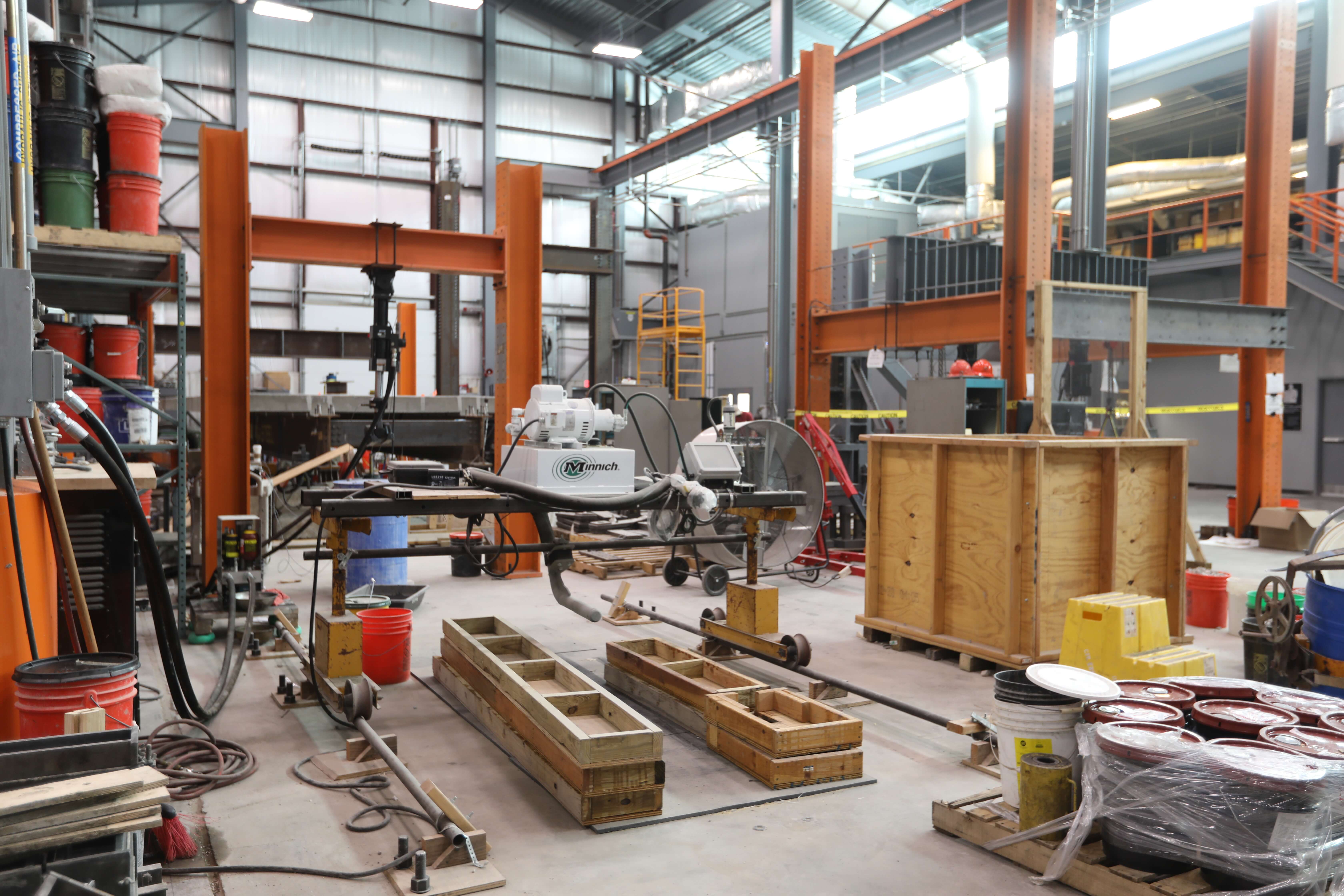Solving pressing environmental problems. Working on infrastructure projects that shape our civilisation. Creating roads and bridges for safe passageways in a city. Ensuring access to clean drinking water.
These actions make up the building blocks of modern society, and will continue to do so for decades to come. As such, there remains a necessity to train civil and environmental engineers who are well-equipped to rise up to the challenge — and change the world for the better while they’re at it.
Luckily, Oklahoma State University is more than capable of undertaking this task.
Established in 1890, the land-grant institution is a Carnegie classified R1 research university that is dedicated to developing new technologies, processes, studies, and medicines into the marketplace. It’s been ranked among the top 50 public universities in the US, proving more than capable of not only producing career-ready graduates, but independent, forward-thinking individuals who are committed to solving the world’s most challenging problems.

Students have access to state-of-the-art facilities that have been renewed with investments of over US$20 million. Source: Oklahoma State University
It’s this that drives the work of the School of Civil and Environmental Engineering (CIVE) at Oklahoma State. Over the last three years, the school completed more than US$2.5 million annually in external research from federal, state, private, and international funding sources. This provides many opportunities for students to engage in paid research.
These efforts have evidently paid off. CIVE was selected by the American Society of Civil Engineers Committee on Education to receive the 2018 Walter LeFevre Award in recognition of its actions to promote licensure, ethics, and professionalism. On top of that, it has been given the American Concrete Institute ACI Outstanding University Award. These accomplishments are as impressive as they are reflective of the school’s contribution to the public good.
It’s little wonder, then, that students from all over the world are drawn to the school’s main programme, the Bachelor of Science in Civil Engineering. This ABET-accredited programme aims to educate civil and environmental engineers with the knowledge and skills for lifelong careers, to conduct research and scholarly activities, and to share knowledge through outreach activities.
Students are taught in state-of-the-art facilities that have been renewed with investments of over US$20 million. Civil Engineering undergraduates have access to the Bert Cooper Engineering Laboratory (BCEL), a world class 33,000 square feet facility that houses the large scale testing equipment needed to conduct most of the school’s research. Naturally, this means that students have many opportunities for hands-on laboratory studies in the new state-of-the-art Endeavor lab (https://ceat.okstate.edu/labs/endeavor/index.html) and many other facilities.
The degree is intentionally broad. Coursework is required for all of the school’s main research areas, including: construction engineering and management, environmental engineering and water resources, geotechnical engineering and construction materials, structural engineering and engineering mechanics, and transportation and pavement engineering.
Students have access to state-of-the-art facilities that have been renewed with investments of over US$20 million. Source: Oklahoma State University
This way, students are equipped with the qualifications and expertise for a wide variety of career opportunities. Indeed, graduates go on to become structural, transportation, environmental, and geotechnical engineers, among other professions. Many practise in local, state, and government agencies, as well as small, medium, and large consulting firms both domestically and internationally.
However, CIVE students aren’t just trained to become career-ready graduates — they’re instilled with a firm belief that their achievements are limitless, regardless of where they come from or who they are. Oklahoma State boasts a dynamic student community of 24,649 students from over 100 countries and all 50 US states. This has gained nationwide attention; the university has earned 25 national awards and recognitions for its commitment to diversity and inclusion.

Civil engineering students at Oklahoma State have access to many opportunities for hands-on laboratory learning. Source: Oklahoma State University
For aspiring female engineers, Oklahoma State is a natural choice. Indeed, one third of CIVE’s Civil Engineering graduating class are women — a figure that’s well above the national average.
It’s a clear vote of confidence for an engineering programme given that most universities typically host more men than women in these courses. More than that, it signifies to the industry as a whole that women are ready and more than capable of taking up such professions. This is sorely needed when considering that engineering is the most male-dominated field in STEM, with women making up only 13% of the workforce.
Civil engineering students at Oklahoma State have access to many opportunities for hands-on laboratory learning. Source: Oklahoma State University
Throw in the university’s commitment to providing affordable education and it becomes an ideal institution for anyone and everyone. More than 50% of Oklahoma State students graduate with zero student loan debt, a result of its many initiatives to provide financial aid, scholarships and grants, and loans to help cover the cost of tuition.
Civil Engineering students are afforded opportunities for department or college specific scholarships through the College of Engineering, Architecture & Technology. Each year, the college awards over US$3 million in scholarships, supported in part by over 300 generous donors.
All the while, students at Oklahoma State are situated in the heart of Stillwater, which has gained the title of America’s Friendliest College Town. Campus life is a bustle of activity, with more than 500 clubs and organisations, 31 residential halls and over 30 dining options to choose from. On top of that, students benefit from attending America’s Healthiest Campus — a well-earned title that stems out of the university’s dedication to providing everything one might need to stay healthy, active, and comfortable.
The result? Graduates who are not only skilled and competent, but confident, happy, and — perhaps most importantly — ready to undertake the responsibilities of a career in civil engineering.
To find out more about Oklahoma State University’s Bachelor of Science in Civil Engineering, have a look at this video and listen to this graduate’s experience.
Apply for a place here or visit Oklahoma State University’s website here.
Follow Oklahoma State University on Facebook, Twitter, Instagram, LinkedIn and Snapchat.












